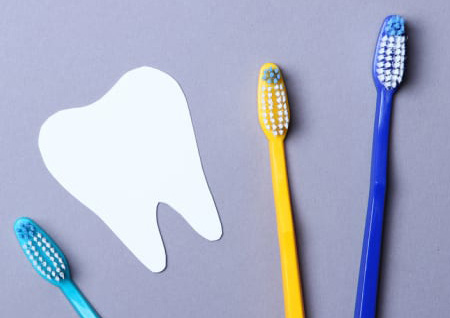
In this post, we explain why your teeth may hurt a bit during treatment with Invisalign clear aligners, and how you can manage any pain you experience.
Have you heard that mouth pain or sore teeth are common during treatment with Invisalign clear aligners? Though this is true, you shouldn’t let it scare you away from this orthodontic treatment option.
Remember the last time you pushed yourself to complete another 10 reps or walk just a little longer and felt a bit sore after? It's the same idea here – as your teeth gently move into their prescribed positions to help you achieve a straighter smile, they may feel a bit sore while the aligners work.
Today, we’ll discuss the challenges you may face during and following Invisalign treatment, and how you can deal with the after effects.
How much will my teeth hurt, and why?
Though not everyone feels soreness or pain during the treatment process, many will; some describe it as a light pressure on their teeth on the first day they switch to a new clear aligner tray.
During treatment with Invisalign, your teeth will move only about .2 millimeters from the first day to the seventh that you wear a new clear aligner tray.
Invisalign trays are made of smooth plastic - no wires (like traditional braces have) to poke or prod sensitive places in your mouth, which can sometimes cause irritation. You may also notice a little more adaptability in this plastic compared to other more stiff plastics, so Invisalign pain should be minimal. Plus, your clear aligners will be custom-made to fit your smile.
Home Remedies for Invisalign Clear Aligner Pain
If you do feel a bit of pain while your teeth adjust to their new positions, there are some home remedies you can try:
Switch to your new aligners at night.
Since you’ll be sleeping, night may be your best time to switch to your new aligners. This way, your mouth will have the next 8 hours or so to get used to them and any discomfort, pain or tenderness you feel may disappear by the time you wake up.
Use dental wax.
Are your teeth or gums feeling painful as your clear aligners realign your teeth? Dental wax may help. Apply a tiny amount between your teeth and your aligners, or on any areas that are very tender or sore. The wax will act as a cushion on your teeth as they adapt to your aligners.
Rinse with warm salt water.
Your mouth sores may be soothed with a swish of salt water. You only need ½ teaspoon per 1 cup in warm water. Try this every few hours for 3 to 4 days, keep diligently flossing, brushing and practicing excellent at-home oral care, and see if this works.
Eat cold foods.
Some patients report that indulging with a 100% fruit Popsicle or cold ice pop helps their gums to feel better after they switch aligners. Don’t forget to remove your clear aligners before you eat.
Take an over-the-counter pain killer.
If all else fails, over-the-counter painkillers can be just what you need to help alleviate mouth pain due to a new set of clear aligners.
Apply an ice pack.
Similar to a cold Popsicle, an ice pack, towel moistened with cold water or a cold compress can help to soothe a sore mouth and reduce inflammation.
See your dentist regularly.
One of the most important things to keep doing as you progress through your Invisalign treatment with clear aligners is to keep seeing your dentist regularly - every four to six weeks.
They will check in on your smile and your progress, and answer any questions you may have about whether what you are experiencing is normal, and provide advice.
Another bonus: clear aligners usually don't require adjustments, so your dentist won't need to tighten them regularly like would be required with traditional braces, which may cause some pain.
Do you have questions about treatment with Invisalign clear aligners?
Talk to a dentist or orthodontist to learn more about the process and your options.




